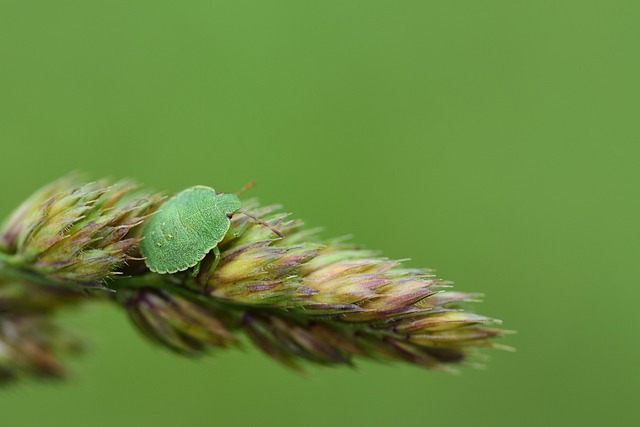Stinging pests like bees, hornets, and wasps pose significant risks due to their stings and ability to trigger severe allergic reactions. Professional stinging pest control services, including wasp removal, bee and hornet control, and eco-friendly extermination methods, are crucial for safe environments. These services adapt to seasonal patterns, habitat preferences, and infestation extent, employing specialized equipment and tailored techniques for residential and commercial spaces, particularly focusing on food service establishments. Advanced technologies like thermal imaging aid in detecting hidden nests, ensuring effective and safe pest removal while minimizing environmental impact.
In the realm of pest control, stinging pests like wasps, bees, and hornets pose unique challenges. This article explores advanced technologies revolutionizing their detection and treatment. From understanding these insects’ behavior and life cycles to comparing traditional vs. modern control methods, we delve into innovative tools such as thermal imaging, robotic systems, and DNA analysis. Additionally, we discuss emerging trends like targeted insecticidal microdrones and integrated pest management strategies, offering both residential and commercial stinging pest control services for a safer, more effective approach.
Understanding Stinging Pests and Their Behavior
Stinging pests, including bees, hornets, and wasps, pose significant risks to both residential and commercial spaces due to their ability to inflict painful stings and potentially trigger severe allergic reactions. Understanding their behavior is crucial in effective pest control services. These insects are often drawn to sweet substances, making them frequent visitors to homes and buildings, especially during summer months when food sources are abundant. They build nests in various locations, from trees and attics to wall cavities, creating a potential hazard for anyone venturing too close.
Professional wasp removal and bee and hornet control are essential for maintaining safe environments. Stinging insect extermination methods have evolved with advanced technologies, offering more precise and eco-friendly solutions. Residential stinging pest services employ specialized equipment and trained professionals to handle these insects, ensuring the safety of occupants and minimizing environmental impact. Similarly, commercial stinging pest removal requires tailored strategies to address large-scale infestations while adhering to health and safety regulations, making it a specialized service vital for many industries.
– Identifying common stinging pests (wasps, bees, hornets)
Stinging pests, including wasps, bees, and hornets, are a common nuisance, especially during warmer months. These insects pose significant risks to both residential and commercial areas, as their stings can cause severe allergic reactions in some individuals. Identifying these pests is the first step towards effective control. Wasps are known for their distinctive yellow and black stripes and tend to be more aggressive when protecting their nests. Bees, on the other hand, have hairy bodies and play a vital role in pollination. Hornets, with their large size and paper-like nests, can be easily distinguished from other insects.
Professional stinging pest control services employ specialized equipment and knowledge to safely remove these pests. Bee and hornet control often involves meticulous techniques to prevent disruption of natural habitats or nearby structures. Stinging insect extermination methods vary based on the species, location, and extent of the infestation. Residential stinging pest services cater to homes, ensuring a comfortable living environment free from unwanted visitors. Commercial stinging pest removal is crucial for businesses, especially food service establishments, to maintain hygiene standards and customer safety.
– Seasonal patterns and habitat preferences
Stinging pests like bees and hornets often exhibit distinct seasonal patterns and habitat preferences, which can guide effective control strategies. During spring and summer, these insects thrive due to abundant food sources like blooming flowers and fruit-bearing trees. As such, their populations peak during this time, leading to increased interactions with humans, particularly in residential and commercial areas. Professional wasp removal services excel at understanding these seasonal fluctuations, allowing them to proactively address stinging insect extermination needs.
For instance, bee and hornet control experts might focus on preventive measures like sealing entry points and removing potential nesting sites during the off-season. In summer, they may employ targeted treatments to minimize disruption while effectively managing populations. Residential stinging pest services tailor their approaches to suit diverse habitats, from urban settings with numerous trees to suburban areas with gardens, ensuring a safe and comfortable environment for both residents and these fascinating yet potentially harmful creatures.
– Life cycles and colony structures
Stinging pests like bees and hornets have distinct life cycles and organized colony structures that pose unique challenges for control and extermination. Understanding these patterns is crucial in effective stinging pest control services. A typical bee colony consists of a queen, male drones, and worker bees, each with specialized roles. The queen is responsible for laying eggs, while worker bees gather nectar, pollen, and protect the hive. Hornets, on the other hand, live in larger colonies with a single queen and workers that are more aggressive than bees. Their nests, often built underground or in cavities, can be challenging to locate and destroy.
Professional wasp removal specialists employ advanced technologies like thermal imaging to detect these hidden nests. They also utilize specialized equipment for safe and effective bee and hornet control, ensuring minimal disruption to residential and commercial environments. Pest control for stinging insects requires tailored strategies, especially in urban settings where colonies can thrive in unexpected places. Residential stinging pest services focus on prevention and non-lethal methods when possible, while commercial stinging pest removal demands a robust approach to protect large spaces and businesses from potential infestations.
In light of these insights into stinging pests’ behavior and the diverse advanced technologies available, it’s clear that effective stinging pest control is achievable. For both residential and commercial settings, professional wasp removal, bee and hornet control, and stinging insect extermination services are crucial in mitigating risks associated with these insects. By employing cutting-edge methods, reputable stinging pest control services can offer safe and efficient solutions, ensuring a peaceful coexistence between humans and these fascinating creatures.
